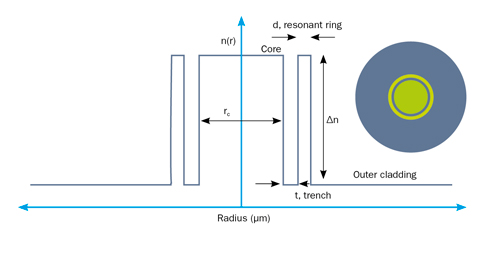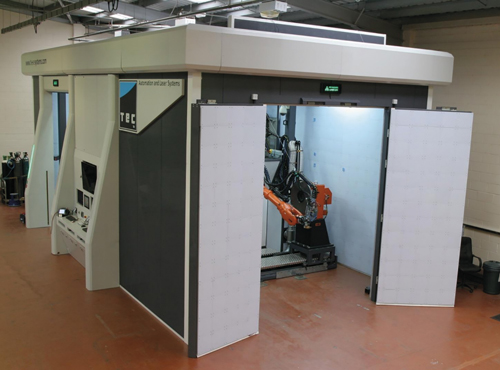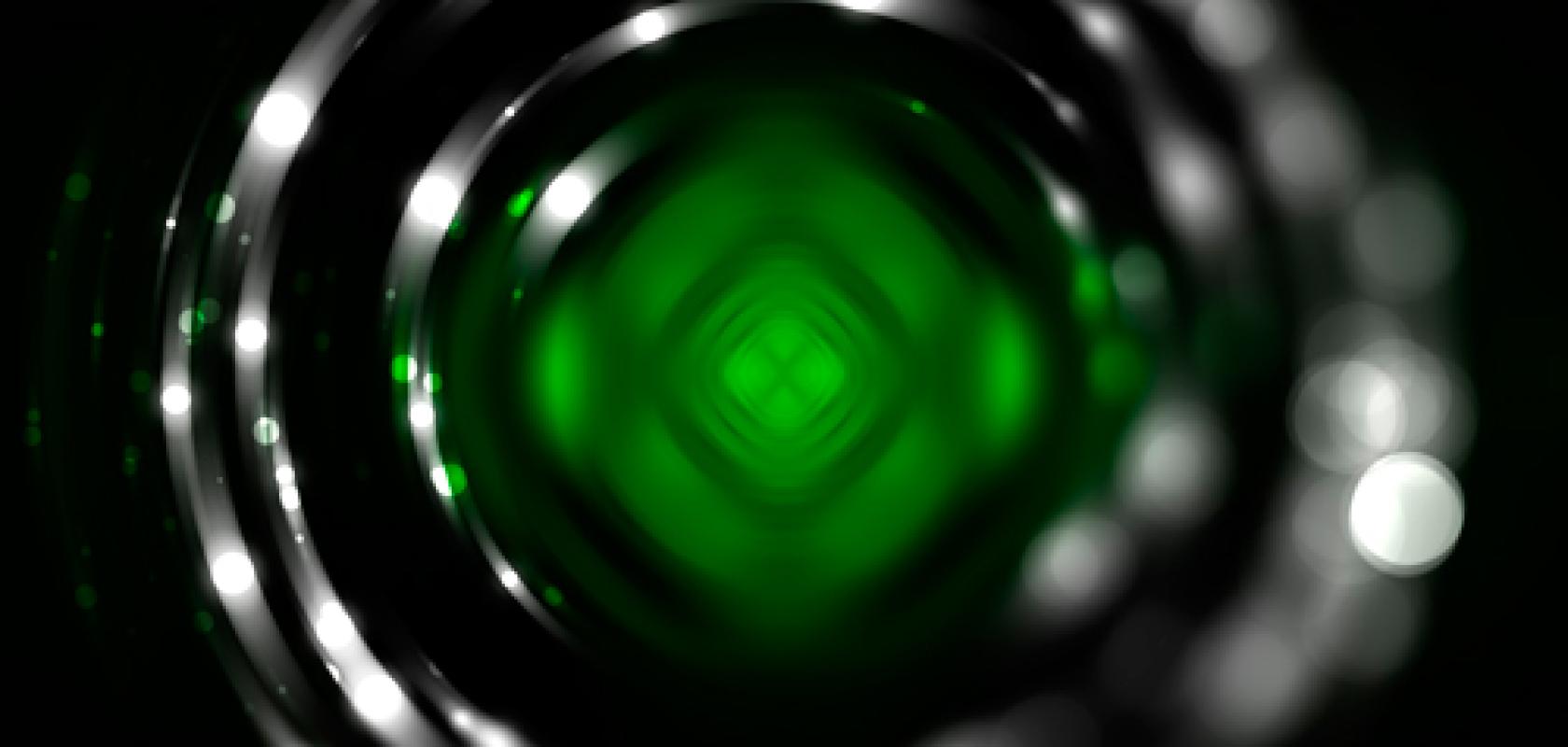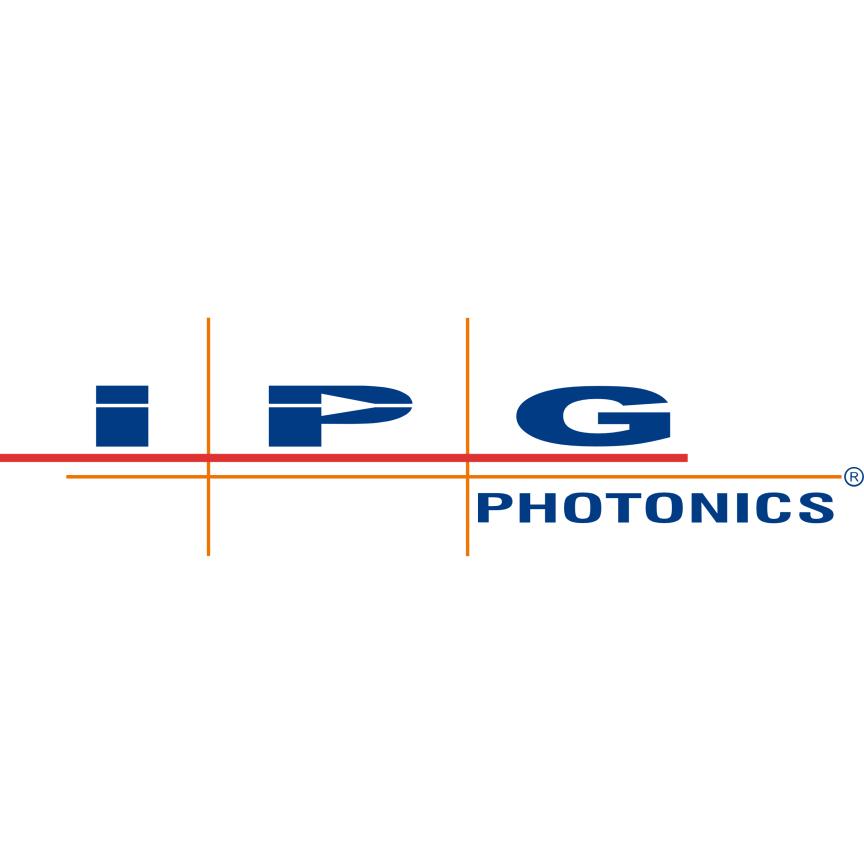Thanks to benefits such as high beam qualities, high efficiencies, and low maintenance costs, fibre lasers are gaining traction in the materials processing field. They now occupy around 40 per cent of the $3 billion1 laser materials processing market and continue to take further market share from CO2 and DPSS alternatives.
Conventional fibre fabrication technologies are now being pushed to their limits to enable higher-power and more efficient fibre lasers at longer wavelengths, with scientists from the UK’s Optoelectronics Research Centre (ORC) developing fibre designs for the widely used 1µm wavelength range, and Coherent-Nufern designing a range of thulium-doped fibre optic components to enable the construction of higher power 2µm laser sources.
Fibre design
Unfortunately, scaling the power of a fibre laser is not as simple as pushing more power through its optical fibres; doing so would increase the power density and in turn induce non-linear scattering effects that restrict the overall laser output power. Manufacturers must therefore reduce the power density within their optical fibres, while ensuring single-mode operation, a feat achievable by increasing the fibre core size and reducing the numerical aperture (NA) of the fibre. These types of fibres are known as large mode area fibres, and several designs have been proposed in recent years that use techniques such as resonant coupling, modal sieving and bend-assisted suppression to deliver higher powers at larger efficiencies.
According to Professor Jayanat Sahu of the Optoelectronics Research Centre at the University of Southampton in the UK, the high-power active fibres currently available typically use a NA of 0.06 and core size of 20µm for 1µm operation. Reducing the NA of these fibres and increasing their core size further is possible; however, Sahu explained that, for NA values below 0.04, conventional fabrication methods are not yet mature enough to ensure the wide-spread uptake of these fibres in industry.
‘Several factors determine whether a fibre design can be used in industry: is it cost-effective, can it be mass produced and can it be spliced with other delivery fibres?’ Sahu said. ‘For fibres with decreasing NA values, fabrication is becoming more challenging. This means novel fabrication techniques have to be developed.’
Sahu said that current solution doping techniques used for manufacturing rare earth-doped fibres are being pushed to their limits, and that the new advanced fabrication techniques will have to enable mass production in industrial environments.

Schematic of the refractive index profile and cross-section of a single-trench fibre
Despite the restrictions of fabrication methods that are currently available, Sahu and his colleagues at Southampton University were able to develop an advanced and more practical ‘single-trench fibre’ design, which features an all-solid structure and a core diameter of up to 60µm. At 1.06µm and 1.55µm wavelengths, the new fibre can offer effective single mode operation at bend diameters of 40cm and 50cm, with an effective area exceeding 1,200µm2 and 1,900µm2 respectively.
Sahu noted that, while ytterbium-doped silica optical fibres are widely used in industry for their highly efficient delivery of 1µm wavelengths, high-power 2µm sources based on thulium- and holmium–doped fibres are also being pursued for their applications in plastics and medicine. However, these active fibres are not currently mature enough in this spectral range to rival the efficiency and power of 1µm sources.
Ytterbium-doping has brought the efficiency of 1µm fibre lasers upwards of 70 per cent, even towards 90 per cent in amplifier configurations. This sets the benchmark for fibre lasers, for which the other primary wavelengths – 1.5µm and the aforementioned 2µm – are lagging behind. While the efficiencies of 1.5µm lasers are not even close to these values, according to Kanishka Tankala, vice president of fibre business at Coherent-Nufern, recent developments in thulium doping for 2µm lasers have brought their efficiencies and power levels closer to this mark.
Thulium-based 2µm lasers can theoretically reach around 75 per cent efficiency when pumped at 1,550nm – no high-brightness pumps are currently available at this wavelength – and 40 per cent theoretical efficiency when pumped at 793nm, according to Tankala. In recent years, there has been a shift towards pumping at 793nm, he added, and conducting research for realising 2µm efficiencies that could one day come close to those of ytterbium-doped 1µm lasers.
‘With the discovery of new glass compositions, which relies on cross-relaxation [processes] between thulium ions in a highly doped fibre, researchers have been able to realise the emission of two signal photons for every pump photon, demonstrating the potential of achieving theoretical efficiencies around 80 per cent,’ he said. A new range of thulium-doped fibre optic components developed by Coherent-Nufern uses these advances in thulium doping technology to enable the construction of fibre lasers and oscillators operating at 2µm with higher output powers and efficiencies than previously possible. The new products incorporate the company’s NuMatch technology, a family of both gain and passive fibre products that have matched mechanical and optical characteristics and are fabricated to tight tolerances in order to maximise fibre efficiency.
‘After introducing our NuMatch –M fibres a few years ago, we have continued improving the geometric and optical tolerances of the fibres to keep pace with the power scaling of single fibre laser modules, and now offer –M+ fibers for high-power lasers,’ explained Tankala. ‘We have had an internal goal to continue to improve all the tolerances of all these parameters which are important.’
At the Photonics West show in San Francisco this year, Coherent Nufern presented a paper discussing high-efficiency, double-clad large-mode area thulium-doped fibres that favour the two-for-one photon cross-relaxation process known to boost fibre efficiency.
‘The fibre design [discussed in the paper] provides some leeway in terms of not having perfect splice recipes, hence making the fibre more manufacturing friendly and enabling higher efficiencies to be achieved,’ commented Tankala, who co-authored the paper. ‘We also improved our process to reduce the level of hydroxyl groups in the glass, which is believed to limit the efficiency of thulium lasers to some extent.’ The paper also detailed how both waveguide design and the pedestal to core ratio of a fibre can be optimised to achieve higher efficiency and beam quality in fibre lasers.
According to Tankala, even with recent developments in thulium-doped fibres, from an efficiency point of view ytterbium still comes out on top. ‘Two micron offers potential but it still isn’t at the 70 to 80 per cent efficiency to compete with ytterbium lasers,’ he said. ‘Users of fibre lasers evaluate lasers in terms of “dollars per watt” or “kilograms per kilowatt” and these metrics make efficiency key – the higher the efficiency, the better the metric – so they can’t afford to look at systems that have lower efficiencies. Industrial lasers are therefore still mostly featuring 1µm wavelengths.’
Two micron wavelengths do offer particularly good absorption in polymers and biological tissue, however, and therefore have applications in plastics and medicine that will help drive their need in industry. The wavelengths are also considerably more eye-safe than those in the 1µm range, which, according to Tankala, could one day instigate an industry-wide shift towards 2µm systems.
‘If you are looking at factories where a lot of manufacturing occurs, having less protections for eye-safety purposes may become a cost driver opening windows that far outweigh a small difference in efficiency,’ he explained. ‘If the efficiencies of the two micron lasers were to approach the theoretical efficiencies offered by 793nm pumping and the two-for-one photon process, in bridging the gap between 1µm and 2µm lasers we could say “well for the sake of eye safety, we can all shift to 2µm”, however this is not currently the case … if the efficiency of 2µm gets close to 1µm then eye safety will come into the picture.’
The highest power currently achieved with a 2µm fibre was demonstrated in 2010 by Nufern as 1kW. ‘It’s been seven years and nobody has pushed it beyond; the technology hasn’t matured yet and has been limited by a market pull for the technology advancement,’ Tankala remarked.
According to Klaus Kleine, director of world-wide applications at Coherent, with the recent scaling of the power and efficiency of thulium-doped 2µm fibre lasers, their usage will broaden considerably, and for that reason Coherent will continue to monitor and research the technology.
References
[1] Optech Consulting press release 17 March 2017
http://www.optech-consulting.com/html/press_release_-_march_15_2017.html
Spotted at Laser World of Photonics
The Laser World of Photonics took place between 26 and 29 June in Munich, with 1,293 exhibitors and more than 32,000 trade visitors (both record figures). As always, numerous displays of the latest fibre laser technology were presented, some of which is discussed below.
II-VI
II-VI showcased its new 190µm-wide 18W laser diode chip for fibre laser pumping, available at 915nm, 940nm and 976nm and designed for coupling into 200µm fibres. Other highlights of the company’s fibre-coupled diode laser product line on display included a high-power diode laser module that generates up to 300W of output power and can be used either as a standalone laser or to pump kilowatt-class fibre lasers. A new wavelength-stabilised module delivering up to 20W of output power was also shown, enabling high-performance pulsed fibre lasers, ultrafast fibre lasers and lasers for supercontinuum applications.
PM fibre-coupled visible lasers offering a >100:1 polarisation extinction ratio, ultra-low noise and high-power stability from a few milliwatts to 150mW, at 488nm, 520nm, 532nm and 637nm were also presented. These lasers are ideal for life sciences and biomedical applications, such as particle sizing, plus a variety of industrial applications.
Fujikura
Among the products shown by Fujikura was its new single-mode CW fibre Laser, featuring a 500W air-cooled system, high stability and an exceptional lifetime. Also on display was the company’s LZM series – part of the ARCMaster fusion splicers, developed to provide high performance and flexibility.
‘The need for accurate, reliable and consistent splicing technology has expanded to applications beyond telecommunications, so splicers must now be versatile enough to cater for different applications, which is where ARCMaster comes in,’ said Neil Bessant, fusion splicer divisional manager at Fujikura Europe. ‘The LAZERMaster LZM-100 for example, has a CO2 laser which provides an extremely stable operation, manually or by PC, with virtually no maintenance.’
SPI Lasers
SPI Lasers exhibited its latest generation of advanced RedPower CW fibre lasers with innovative features such as pierce detection and back reflection protection, optimised for the most challenging industrial manufacturing tasks. Visitors had the opportunity to see the new RedPower Prism and Qube CW (300W to 6kW) products for the first time, and identify how these fibre lasers can improve industrial manufacturing processes by maximising efficiency, reducing production times and lowering costs. Both the Prism and Qube product lines include numerous innovative user benefits to reduce downtime and increase productivity.
IMRA
Ultrafast fibre specialist IMRA was also present at the show, representing its range of ultrafast fibre laser technology. The company’s FCPA µJewel product line was recently expanded with the DX series of high pulse energy ytterbium-doped femtosecond fibre lasers. The DX series offers sufficient pulse energy for selected material processing at a near-infrared wavelength of 1,045nm with an ideal compact form factor. Harmonic generation packages, which convert its output to visible and UV wavelengths, are also available. The FCPA architecture allows users to choose between high energy operation up to 40µJ pulses, repetition rate up to 5MHz, and average power up to 10W depending on the specific source. The DX Series allow for material processing at fast rates in a light-weight package.
FiberBridge Photonics
FiberBridge Photonics, a spin-off company from Laser Zentrum Hannover, showcased its highly customised fibre components and CO2 laser-based fibre component machinery. Through providing a set of matched single-mode components, pump combiners, end caps, cladding light strippers, mode field adapters, fibre beam dumps, fibre tapers and splice connections, the company helps its customers choose the right fibre components to avoid them wasting time and performance through mismatched fibre pairs. The company also provides individualised ready-to-use fibre modules, enabling customers to increase their system performance or realise completely new fibre architectures with highly integrated fibre components, saving cost-intensive time in planning and manufacturing.
With increasingly powerful fibre lasers being used in industrial environments, more demands will have to be made of laser safety equipment to ensure the health and safety of laser operators.
Lasermet has designed a modular protection enclosure – the Laser Jailer – which can be adapted to suit rapidly changing industrial environments and technology.
The enclosure uses flexible circuitry ‘wallpapered’ to the inside of its walls and doors to detect powerful laser strikes. When a strike is detected, the circuitry shuts the laser down in less than 50ms via an interlock controller.
The Laser Jailer is already being deployed at the Manufacturing Technology Centre in the UK in environments where 20kW fibre lasers are used, and is the only dual channel, modular build, fail-safe laser protection system that can provide protection against fibre lasers over 6kW.

Lasermet's Laser Jailer deploys active panels that can detect and shut off powerful lasers within 50ms when struck
Suitable for all wavelengths and laser power densities, the system can be retrofitted to appropriate enclosures and can also be used to upgrade the Lasermet’s own Laser Castle enclosure. Being fully dual channel, the interlock control system conforms to the safety requirements of ISO 13849-1 performance level ‘e’ and the safety requirements of BS EN 60825.


